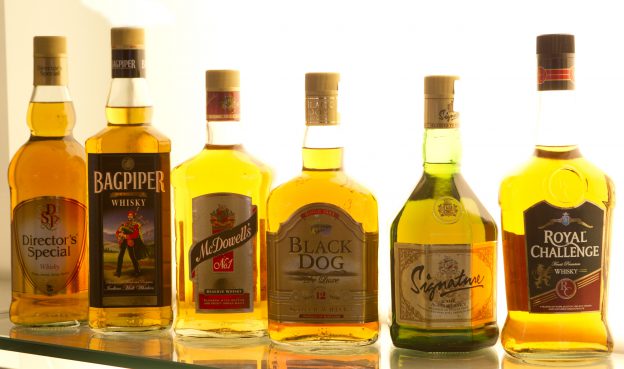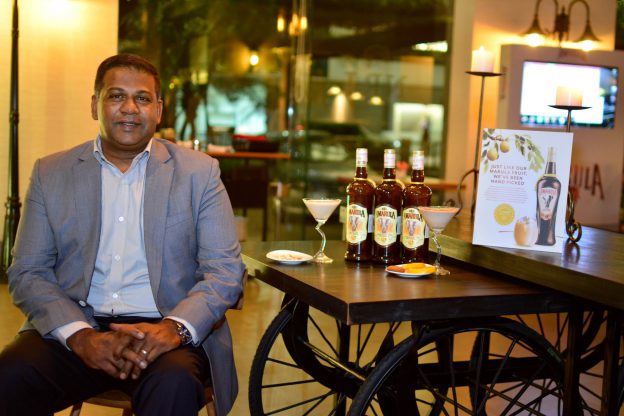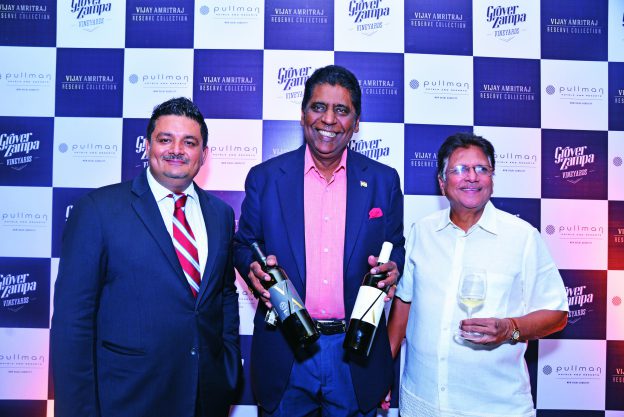
Category Archives: profiles


Kay Pillay, DISTELL-MD Asia Pacific and Middle East

Scotch remains key driver for Diageo in Asia Pac Region
According to a recent interaction between top corporate heads and Sam Fischer, President – Diageo Greater China and Asia (given its strategic focus, Diageo separates management responsibility for India from Asia Pacific), the area Fischer is responsible for is about 11% of Diageo’s net sales and about 10% of operating profits.
According to Diageo, the aforementioned market already represents 100 billion pounds in beverage alcohol sales which is a third of global consumption. It has a large fast growing middle class population which is becoming increasingly urbanized and an increasing proportion of that growing population are affluent consumers. Last year, Asia also recorded the highest increase in high net worth individuals, up nearly 9%.
“The beverage alcohol market is comprised mainly of beer and Chinese white spirits, and we selectively participate in both categories with Guinness and our stake in Shui Jing Fang. International style spirits account for 10% of the region’s net sales and has a great opportunity to increase its penetration”, said Sam Fischer, President – Diageo Greater China and Asia, in his summation ahead of a Q&A virtual session.
He said that within international style spirits scotch is the largest category across the region, double the size of Cognac, and therefore Diageo, with its strength in scotch is the market leader in international spirits in every major market with the exception of China.
“In this context our strategy is to drive growth by increasing penetration of international style spirits. The execution of the strategy is based on 5 key areas: Win in scotch; Strengthen our local premium core brands; Continue to grow reserve; Innovate to broaden our participation to recruit new consumers and all underpinned by driving productivity to invest in growth”, Fischer said.
He said that given the size of the company’s scotch business it forms the biggest part of its premium core offering in many markets. However there are markets where it reaches scale through local brands and categories, such as beer in Indonesia with Guinness, rum in Australia with Bundaberg, Chinese white spirits in China with Shui Jing Fang. “So driving growth means strengthening our local premium core brands in every market. Last year we grew these brands and I expect that momentum to continue in F17”, said Fischer.
“Given the growing number of affluent consumers in the region, we have an exciting opportunity to accelerate growth from our reserve brands. The performance of our reserve portfolio is an area I am particularly proud of as it represents an excellent example of how Diageo can use our capabilities and strengths to deliver sustained growth. We have an unrivalled portfolio, a proven operating model and high quality marketing capabilities on luxury, and we have pioneered the Johnnie Walker House retail concept as embassies of Scotch whisky to mentor consumers and showcase our brands”, Fischer explained.
Accordingly, the biggest reserve markets in the region are China, with Chinese White Spirits and scotch, Taiwan, mainly scotch, and Diageo has a big growth opportunity in Australia. To grow Reserve will remain a focus for the region with Chinese White Spirits and scotch being the core priorities through Shui Jing Fang, Johnnie Walker and its Malts portfolio. The company also has an opportunity to expand beyond these categories and continue to build its luxury vodka, bourbon, gin and tequila.
“Last year I spoke about how key innovation is in enabling us to broaden our participation across different price points and categories to drive recruitment of new consumers. We have made significant progress in this area. Products such as Smirnoff Midnight 100 in Thailand, Guinness Zero in Indonesia, Master distiller No. 8 in China, and the W range in Korea have proven to be very successful at expanding our offering into new occasions”, said Fischer.
Starting with South East Asia Fischer said it is over 20% of the region net sales and is one of Diageo’s most diverse and vibrant markets, consisting of 15 different countries in different stages of development and including markets with high levels of volatility. The market has about 10% of the global population, more than half of consumers are under 30s and 80 million new consumers are expected to enter legal drinking age over the next 10 years. It is a compelling consumer opportunity. Within international spirits scotch is the largest and one of the fastest growing categories, and Diageo is the leader in this category in every country.
“In fact we are the leader in international spirits overall, being double the size of our nearest competitor. Our three biggest markets, representing 75% of our business, are Thailand, Indonesia and Key Accounts. In both Thailand and Indonesia our strategy is similar; growing scotch in Thailand and beer in Indonesia, while broadening our participation into other categories” Fischer said.
He explained that Thailand has seen a relatively stable period of low macro-economic growth. “We had to navigate some volatility in the first half of last year due to reduced tourism and regulatory restrictions on outlet sales. Excise duty increases impacting the imported whisky category has also led to consumers trading down into local spirits. We have also seen consumers shift away from the modern on trade to more casual food and drinking outlets. Despite these challenges last year we have gained 1.4ppts of share in imported whisky, which followed the 4ppts of share achieved the previous year”.
Great execution against the “Keep Walking” campaign, increased awareness of the Johnnie Walker trademark by 16%, making Johnnie Walker the most recognised whisky trademark in Thailand, he said. The company also extended the occasions for Black Label with the successful Black Highball program, which promoted Black Label and Soda cocktails in over 150 premium reserve outlets.
“In parallel to growing our scotch business, we are also working to broaden our participation. Thailand is home to a very large beer market and last year we launched Smirnoff Midnight 100 Guarana to recruit consumers from beer. Smirnoff Midnight 100 Guarana stands out as a great example of local adaptation of a global idea. The naming was grounded in local culture whilst the global liquid and positioning remained unchanged. It recruited 700k consumers into the Smirnoff brand and it achieved 22% share in the ready to drink segment. All of this achieved through a ruthless focus on execution and investing in very specific growth drivers. This focus will remain in F17 as we continue to expand the brand into different formats”, said Fischer.
In the Indonesia market Diageo plays at scale in the growing beer segment, a platform it can use to grow its spirits business.
“Last year we were very quick to adapt to the new regulations banning off trade sales of beer by restructuring the commercial team and reviewing our outlet coverage. After a challenging first half, beer net sales were up 4% for the full year. Guinness Zero, which was up 42%, and Guinness Limited Edition, which celebrated Indonesia pride, are both expanding our consumer reach and relevance. The designs were co-created with Indonesian millennial influencers and were grounded in a culturally relevant idea of Batik, a much loved and respected Indonesian tradition/art”, said Fischer.
Moving on to Greater China, Fischer said Diageo’s Greater China business is also over 20% of net sales in the region with China being 60% and Taiwan 40%.
China is the single largest beverage alcohol market in the world. It has positive demographics as 21 million LDA consumers will enter the market every year over the coming years. There is strong growth in income as China has pulled hundreds of millions of its citizens out of poverty and by 2022, 630 million Chinese — or 75% of the nation’s urban population — will be classified as middle class. And today 57% of the population is already living in urban areas compared to 36% in 2000. These all contribute to a growing beverage alcohol market.
Fischer pointed out that Baijiu, accounts for about two thirds of the beverage alcohol market and Diageo is the only international spirits company with a direct participation in this category with a 40% stake in Shui Jing Fang: an established local super premium brand with 600 years of heritage. There is also a large penetration opportunity for international style spirits which represent just 2% of the NSV pool.
“The consumer environment is changing fast, with younger consumers preferring to spend more time at home and online to connect with friends, resulting in rising home parties’ occasions and a decline in modern on trade traffic. Consumers are also more open to new offerings as status is no longer all about materialism but increasingly about experience, particularly amongst millennial consumers. This means there is a growing opportunity for brands with purpose, heritage, provenance and craft credentials such as Johnnie Walker and our single malts to win. Premiumization continues to be a strong underlying trend with consumers looking for quality international brands at accessible price points”, Fischer said.
Scotch is the company’s second largest category. The anti-extravagance campaign reduced spend in the Traditional on Trade channel, especially in high end outlets. As a result, competition increased in the Modern on Trade channel, making this channel with its expensive contractual volumes un-profitable. “Hence our decision to pull out of those contracted outlets which negatively impacted our scotch business, in F16 down 34%, while underlying depletions were down double digit”, said Fischer.
According to him, more importantly these changes have opened up the scotch opportunity for the company. The opportunity for scotch in China is now in super premium where Diageo leads driven by Johnnie Walker Blue Label and its Malts. The number of whisky bars or collectors club are increasing in tier 1 cities, with over 100 new bars opening last year, with a growing trend of single malts as consumers look for brands with quality and heritage. “Over the last 12 months we made fundamental changes to our Diageo China business to establish stronger foundations to support future profitable growth particularly in the super premium segment, and in this segment scotch is gaining share over cognac”, said Fischer.
Moving onto Taiwan, Fischer said it was an outstanding market for the company, largely made of scotch, which has delivered 9% CAGR net sales growth over the last 6 years, largely driven by The Singleton.
Fischer then went on to developed markets in the region, starting with North Asia
“North Asia is also about 20% of my business, with South Korea representing approximately 2/3 of the business and the remainder being Japan. In South Korea we are the market leader in scotch with Windsor which accounts for three quarters of our sales. In Japan, spirits brands account for two thirds of NSV, with the remainder generated from RTDs and beer.
“South Korea continues to be an attractive opportunity for us. Despite the recent GDP slow down, it is one of the largest and most robust economies in Asia. It has a vibrant beverage alcohol market, with a strong drinking culture amongst both men and women”, Fischer remarked.
However, he said consumer behaviour is changing. Consumers are moving away from the traditional on trade occasions, which was largely corporate entertainment driven, and it has been the stronghold of the scotch business. “More than 60% of our business is still linked to the traditional on trade and we haven’t fully unlocked the opportunity to leverage the rest of the Diageo portfolio. Our strategy in South Korea is clear, and it is about continuing to maximise the profitable but declining business we have with Windsor, which remains an important generator of funds, while we look to develop categories out of the traditional on trade. This will include the development of Johnnie walker and Guinness in modern on trade, causal hang outs and modern off trade”, he said.
Moving on to Japan Fischer said it is the world’s 3rd largest economy with an estimated beverage alcohol market value of 11bn pounds. It represents an untapped growth opportunity for Diageo as the company currently has less than 1% share of this market.
“Japan has an ageing declining population but beverage alcohol is still a vibrant and dynamic market and the category trends are positive for the categories and segments where we operate, as Beer, Sake and Sochu, which together make up over 70% of beverage alcohol market value, are in decline and losing share to whisky, RTD, premium beer and wine”, said Fischer.
Diageo’s route to consumer here consists of two joint ventures which gives it access to different channels, one with Kirin for premium core spirits, RTDs and beer and one with Moet Hennessy for its luxury spirits portfolio. “Whisky is a hot category in Japan and last year our scotch business was up 21%. But we want to do more as we currently only have 5% of total whisky”, Fischer said.
Ending his summation with his home country Australia, Fischer said shifting consumer lifestyles and twice yearly duty increases have impacted beverage alcohol consumption per capita as the excise duty system favours wine and beer, with spirits and RTD categories disproportionately highly taxed. Despite this, spirits value has grown ahead of other beverage alcohol categories over the last five years, driven by accelerated growth in premium and above segments. The Australian market has a significantly larger RTD category than other markets, and most major spirits brands offer RTD formats. Diageo is a market leader in both spirits and RTD.
“In Australia, which is about a quarter of my business, we operate through a sales and manufacturing IMC and distribute through third parties in New Zealand and the South Pacific Islands. Spirits account for more than half of market NSV, with RTDs contributing the remainder. Our medium term strategy is to grow penetration and drive premiumisation by strengthening our premium core, revitalize the RTD category and accelerate growth in reserve”, said Fischer.

